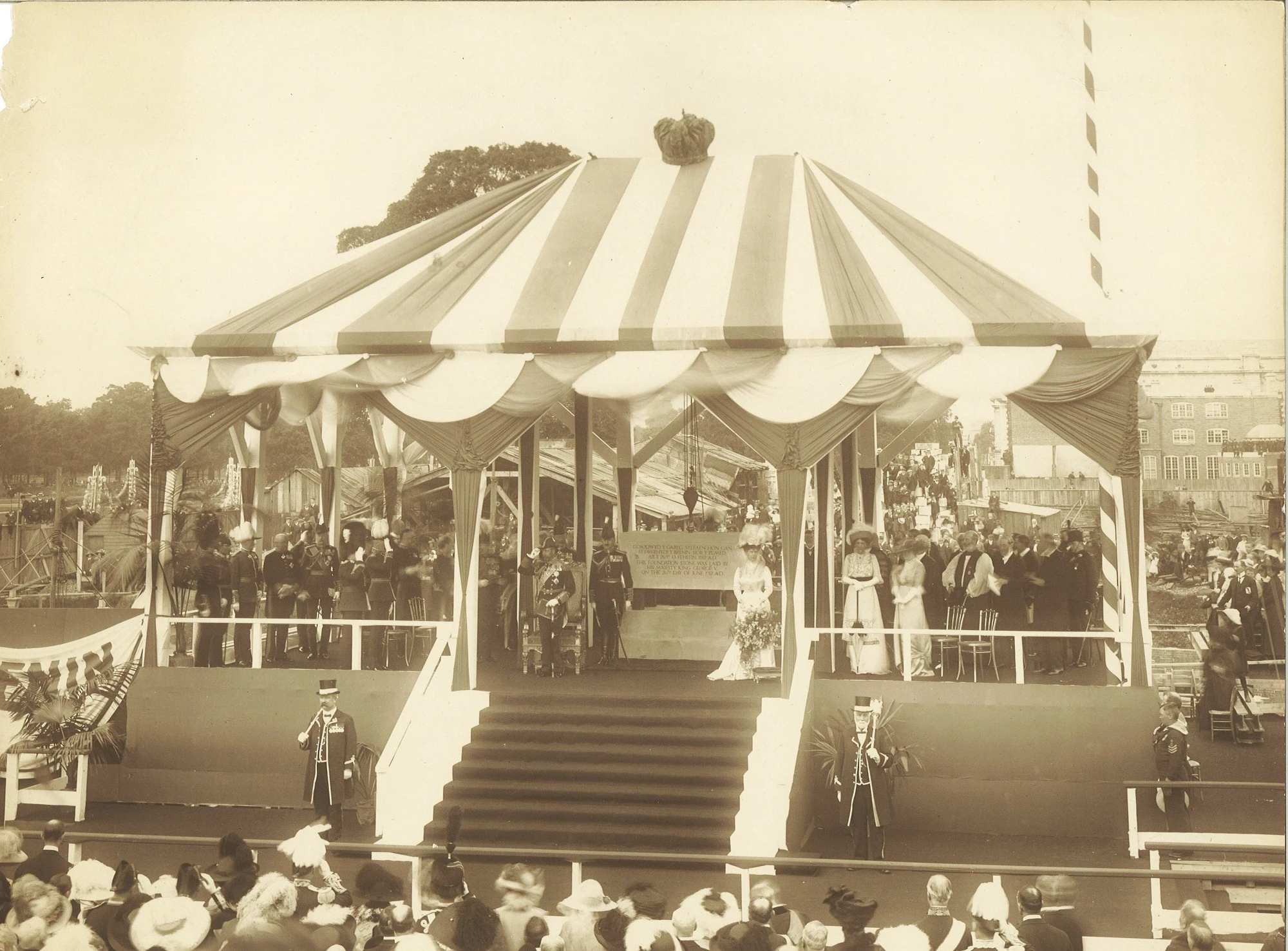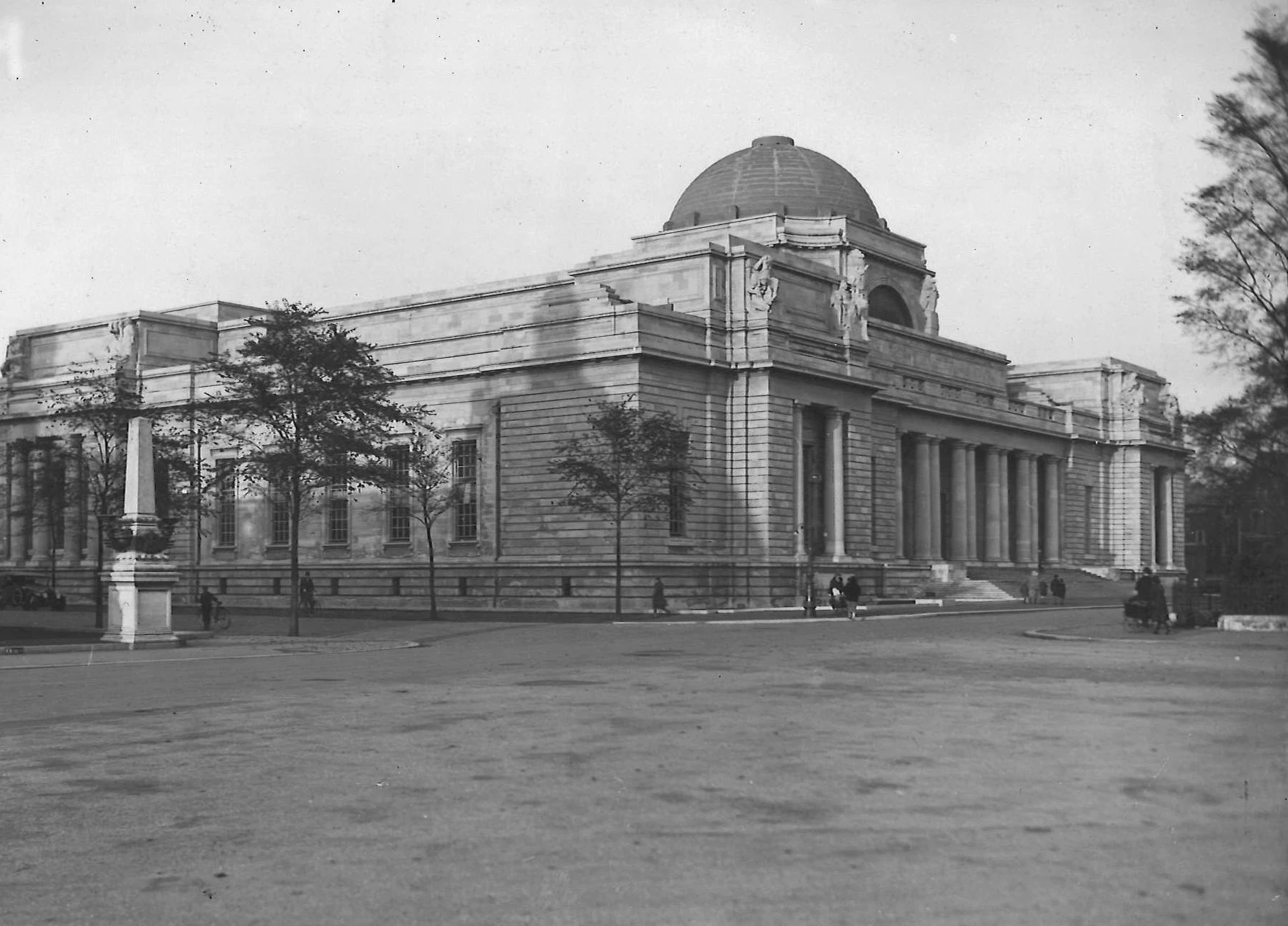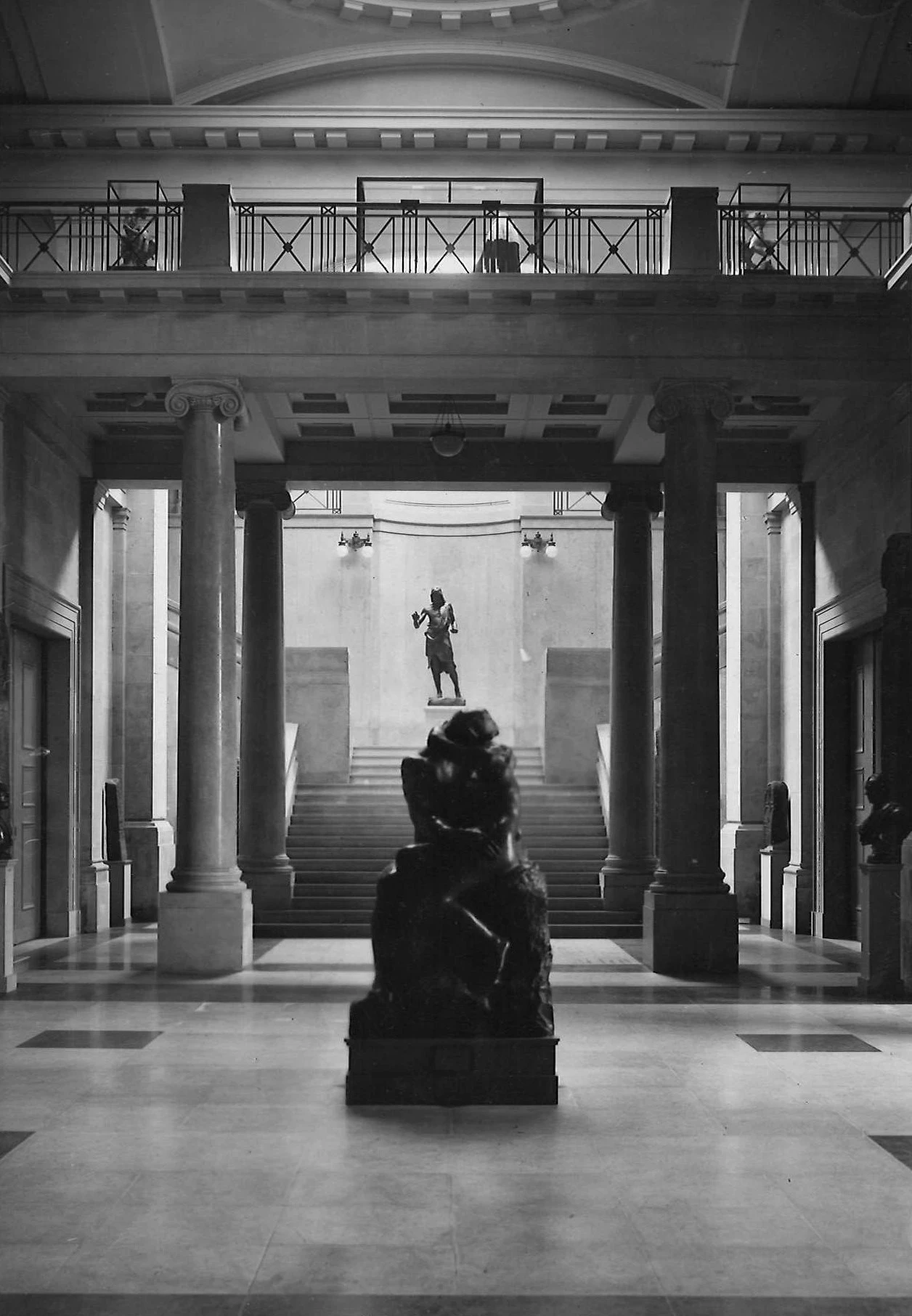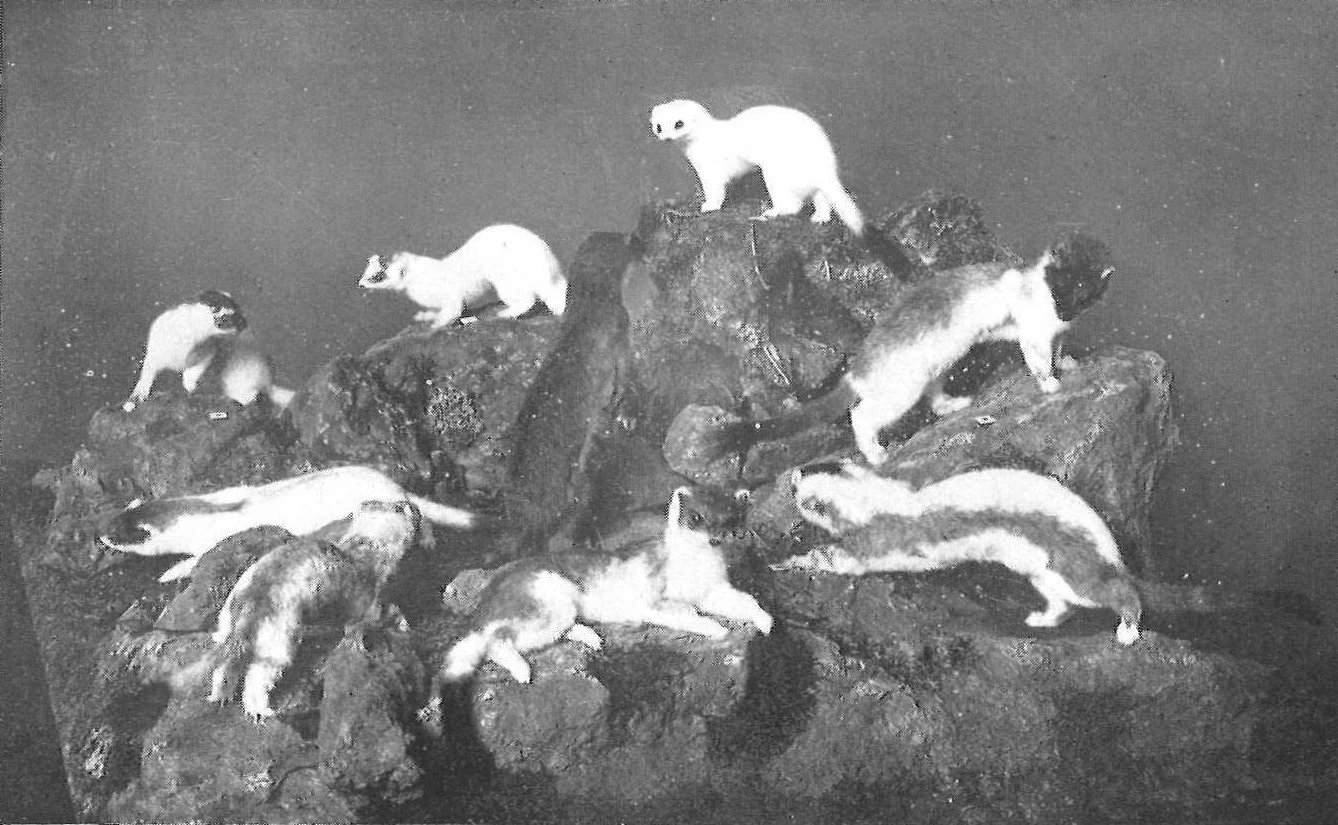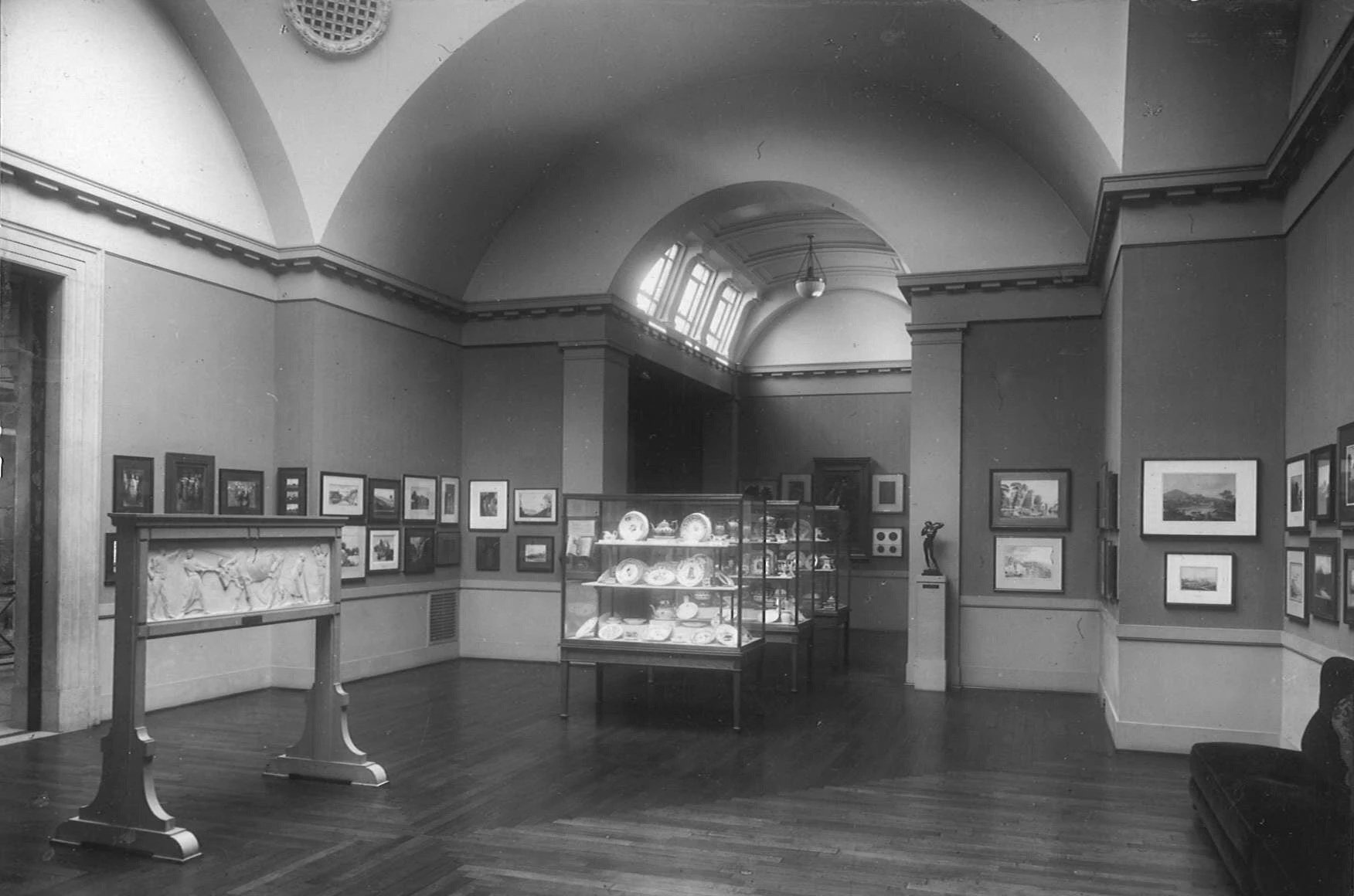Opening of the National Museum October 1922
, 28 October 2022
On the 28th of October we will be celebrating 100 years since Amgueddfa Cymru first opened its doors to the public. Although the Museum's official centenary was in 2007, marking the founding by Royal Charter of 1907, the journey to opening was a much slower process characterised by delays and interrupted by the enormity of a world war.
After the granting of the Charter, architects were engaged to design the new building and the Foundation Stone was laid by George V on the 26th June 1912. The original intention was to complete the building in stages, so enough funds were raised to begin work on the south portion (which included the Main Hall) of the building.
Laying of the Foundation Stone 26th June 1912
When war broke out in 1914, work initially continued, as photographs from 1915 show, however before long the lack of building materials (particularly steel and lead) and labourers meant that work had to be halted. When it restarted again after the end of the war, the climate was very different. Britain experienced severe unemployment and poverty, plunging the country into a depression.
Construction of the Museum building in Cathays Park, 1915
It was against this background that, even with building work still in progress, the western portion of the Main Hall was opened to the public on the 28th October 1922. Four days earlier the hoardings around the building had been removed and although there was no formal ceremony at this point, the Museum Court of Governors attended a visit of inspection, followed by lunch at City Hall with the Lord Mayor the day before.
View of the exterior of the Museum from the south-west
During the fifteen years since its foundation the Museum had been steadily employing staff and building collections. No guidebooks were produced for the informal opening, the first guide to the collections wasn’t published until a year later, but reports and photographs published in the local papers give us an idea of what those first visitors to the Museum would have seen.
View of the Main Hall looking towards the western staircase
The Main Hall housed large sculptures such as The Kiss by Auguste Rodin and St John the Baptist by William Goscombe John. From the Main Hall visitors could enter the Glanely Gallery (now known as the Clore Discovery Gallery) to view geology collections, particularly rocks and minerals found in Wales. While in the square gallery across the opposite side of the Hall were the Zoology collections, occupying a space they still hold now, although the displays have been updated since those early days!
Stoat display from the Zoology Gallery
Upstairs in the Pyke Thompson Gallery (now known as Gallery 18) the focal points were watercolour drawings once belonging to James Pyke Thompson and a collection of Welsh ceramics donated in 1918 by Wilfred de Winton. Across the bridge in the square gallery, oil paintings from the Menelaus Bequest were displayed.
The Pyke Thompson Gallery in 1925
The Archaeology Department did not have a gallery of their own at the time of the 1922 opening, as it would form part of the building still undergoing construction. But, a year later objects from the Archaeology collections were displayed in the Main Hall and on the balconies, before moving to a more permanent space in the first-floor front gallery (which is now occupied by the Welsh Ceramics collection). By 1925 they had also installed the Welsh Bygones galleries, with reconstructions of a Welsh kitchen and a Welsh bedroom, in a gallery at the back of the Main Hall and the Botany collections occupied the south-east front gallery on the ground floor (the area which is now the Welsh Herbarium).
The Archaeology Gallery in 1925
The layout of the Museum remained this way until the construction of the East Wing in the 1930s prompted a large-scale rearrangement of the galleries. Further alterations were made throughout the rest of the 20th century as the West Wing was constructed in the 1960s and then the Centre Block galleries were added in the early 1990s. If you are interested in learning more about the history of Amgueddfa Cymru, keep an eye out for more blogs and articles appearing on our website over the coming months.
